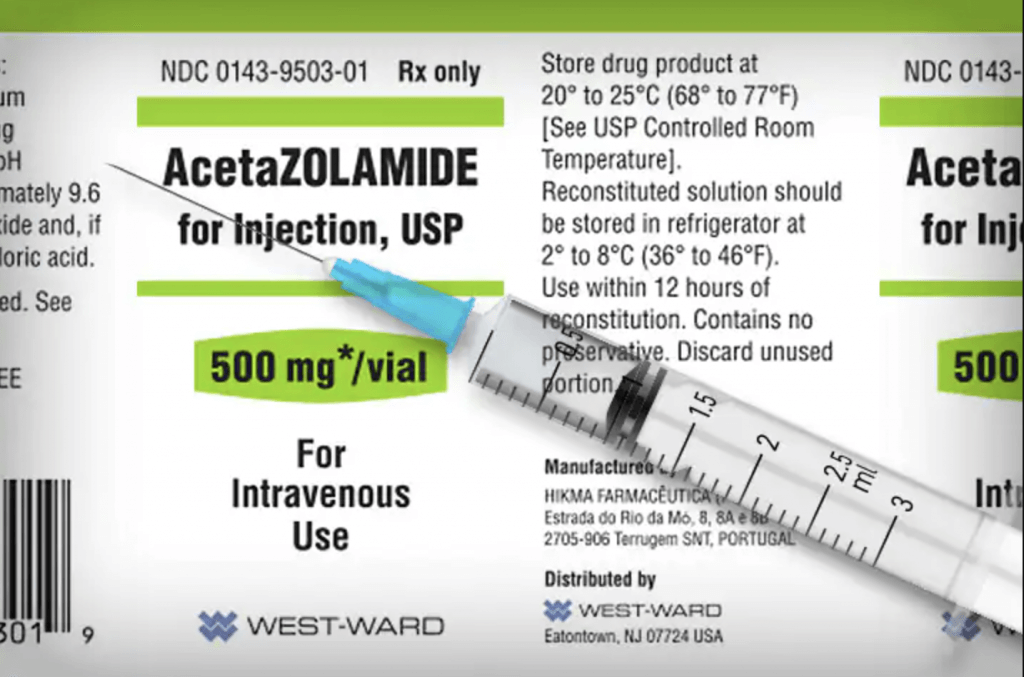No, this is not a story about vaccination and the contaminants they contain. This is about more every day drugs and unknown filth that often shows up, when there is no effective quality control.
In a nutshell, pharmaceutical companies are always edging and trying to get away with murder (yes, murder). Sometimes they get caught. Most often they do not.
Getting caught isn’t a problem; they just pay the fine and carry on (at least here in the USA). It’s accounting: the fine = minus X but our profit is X3 so—no problem. We make money. What’s missing from the calculations, of course, is the number of dead or damaged patients. WE DON’T CALCULATE THAT, it’s worthless math!
What got me started?
A story by Kristina Fiore, Director of Enterprise & Investigative Reporting, in MedPage Today October 15, 2020, about contaminants in injectable Acetazolamide, a diuretic medication used to treat glaucoma, epilepsy, altitude sickness, periodic paralysis, idiopathic intracranial hypertension (raised brain pressure of unclear cause), and heart failure. It may be used long term for the treatment of open angle glaucoma and short term for acute angle closure glaucoma until surgery can be carried out. It is taken by mouth or injection into a vein.

Not in my veins!
Researchers at the University of Kentucky have called on the FDA to recall certain formulations of the injectable acetazolamide, after their own chemical analysis turned up unknown impurities.
The team filed a citizen petition on Sept. 30, citing anomalies in vials within the same lot for products from both a Dutch company, Mylan, and a British multi-national Hikma. Near-infrared spectroscopy revealed extra peaks indicative of contamination—but it wasn’t clear what those contaminants were, as the researchers couldn’t find matches in pharmacology libraries.
“In 30 years of near-infrared spectroscopy, I haven’t seen too many drugs that look like that,” said Philip Almeter, PharmD, chief pharmacist of the University of Kentucky HealthCare, in Lexington. “We thought we should pull it right away and figure out why it was looking so contaminated. We still are not sure what it’s contaminated with.”1
Last year, Almeter and colleague Robert Lodder, PhD, of the University of Kentucky College of Pharmacy, also in Lexington, launched what they called the Drug Quality Study to test pharmaceuticals used in the university’s health system before they’re given to patients. Injectable acetazolamide was the first product they tested.
When they looked at Mylan’s drug using near-infrared spectroscopy, they found 11 of 30 vials from the same lot had significant variations from USP standards, suggesting “a manufacturing procedure that is out of process control,” they wrote in the FDA petition.
What’s more, Mylan were cheating! Lab results from a third party, the Albany Molecular Research Inc (AMRI), confirmed via high-performance liquid chromatography that the contaminated vials only contained 80% to 87% of the active pharmaceutical ingredient, versus USP standard calling for 97%.
That’s seriously short-changing to users and could put a patient’s life at risk.
The researchers also tested an injectable acetazolamide product from Hikma, finding anomalies in two of 10 vials in the same lot using near-infrared spectroscopy. Subsequent analysis by AMRI showed the vials contained only 83.5% to 85.6% API, again well below the USP standard.
So Hikma too are cheats.
But what are the impurities? Nobody knows. They could be impurities or breakdown products that naturally formed because it wasn’t handled properly, according to Lodder. But whatever the contaminants were, they were not to be found in any known scientific library of substance patterns.
Meantime, the health system has since pulled both the Mylan and Hikma products from its pharmacy shelves. It’s using a third product, made by X-Gen, that apparently passed the Almeter and Lodder spectrometry scan.
Where Was The FDA In This?
Predictable. Don’t want to disturb their Big Pharma cronies, of course. They told Almeter and Lodder to file a MedWatch report (so it could be buried and forgotten). Disappointed by the response, Almeter and Lodder filed a citizen petition instead!2
Citizen petitions are part of the basic law governing everything the FDA does – at any time, any “interested person” can request that the FDA “issue, amend, or revoke a regulation or order,” or “take or refrain from taking any other form of administrative action.”
In practice, citizen’s petitions are used mainly by pharmaceutical companies themselves, to attack and harass each other, by causing delays.
There’s a need for monitoring quality of finished pharmaceutical products given the global manufacturing market and challenges in FDA inspections of those facilities, Almeter said. He means the FDA “inspections” are cursory or non-existent and not really up to a verifiable standard.
But then we all know, FDA is not looking out for patients interests, but for Pharma profits.
The idea for the university’s Drug Quality Study came, Almeter explained, after reading Katherine Eban’s book Bottle of Lies, which exposed serious manufacturing deficiencies in the generic drug industry.3

No doubt the drug industry would like to see more books like this, destroying the credibility of cheap generics. But also, there is no doubt, that some Indian manufacturers are big cheats; that’s how business is done in India! It’s caveat emptor (buyer beware).
The trouble is, there is little money made on generics, so not much incentive to play the game straight. What does that mean for patients? Best response is don’t take the medicines. You are at risk with all meds. Don’t be fooled” Big Pharma meds are made in exactly the same factories in India and elsewhere!
In fact ninety percent of the prescription drugs consumed in the United States are generics, and the majority of them are produced overseas, mostly in India and China.4
Of course the COVID-19 situation is further hindering inspections, and thus concerns about quality are even greater, Almeter said. The stakes are especially high for sterile injectables, which need to be made extremely carefully given that they’re often injected directly into the bloodstream.
David Light, CEO of Valisure, entered the conversation and said that “from an overall chemical quality perspective there are certainly additional points of concern with an injectable beyond what we’ve already seen as problems with oral solids like tablets and capsules.”
“By being in liquid form, the drug is effectively in a ‘solvent’ which can make degradation and other undesirable reactions more likely to happen than when the drug is in a more static, solid form,” Light said. “Even getting precise dosage can be more challenging since the manufacturer will have to account for solubility, dissolution rates, evaporation and other liquid-related considerations.”
So remember that when you are confronted with injectables. Insulin is one of the most common. But what are you actually getting in your shot? Chemical contaminants and a very different dose to what you are TOLD you are getting.
I’d go for a natural cure, if I were you. All you have to do is eat right, live right and take your supplements. The rest is up to Mother Nature!
Stay well, please!

Prof. Keith Scott-Mumby
References:
1. https://www.medpagetoday.com/publichealthpolicy/productalert/89135
2. https://en.wikipedia.org/wiki/FDA_citizen_petition
3. https://www.amazon.com/Bottles-Lies-Ranbaxy-Indian-Pharma/dp/9353450446/
4. https://www.wired.com/story/8-ways-overseas-drug-manufacturers-dupe-fda/
